|
|
Period:
Yugoslav Wars
Region:
Bosnia
The Croatian massacre of Serbian soldiers in Boderište - Bosnia 1993
The crime in Boderište is one of the most horrific crimes committed during the war in Bosnia and Herzegovina in the 1990s.
This monstrouos crime was committed by members of the 108th Brigade of the Croatian Defence Council on March 8, 1993. At first, they captured 15 members of the Republika Srpska Army in the region of Grbavica town and then took them to Bodorište at the northeast of Bosnia, where they killed them in unimaginable way.
Corpses of Serbian soldiers were so massacred that the team of forensics specialists from the Military Medical Academy from Belgrade hardly managed to conduct obduction the day later.
The Prosecutor’s office of Bosnia and Herzegovina and the International Criminal Court for ex Yugoslavia, the Hague Tribunal, refused to prosecute the perpetrators, although the evidence were collected and submitted in 2003.
There is deliberate obstruction taking place and the files are not being completed for years.
BACKGROUND
SFR Yugoslavia was a federal state made up of 6 republics (FR Slovenia, FR Croatia, SR Bosnia, and Herzegovina, SR Montenegro, SR Serbia, and SR Macedonia). Both Yugoslavia and the JNA were established on the principle of “brotherhood and unity” of all peoples and nationalities who lived in the SFRY.
The social and economic system of the SFRY was socialism.
The 1974 Constitution of Yugoslavia brought about the decentralization of the SFRY, which later enabled the separatist forces in Slovenia and Croatia, and later in Bosnia and Herzegovina to begin the dissolution of Yugoslavia, followed by bloody wars and persecution.
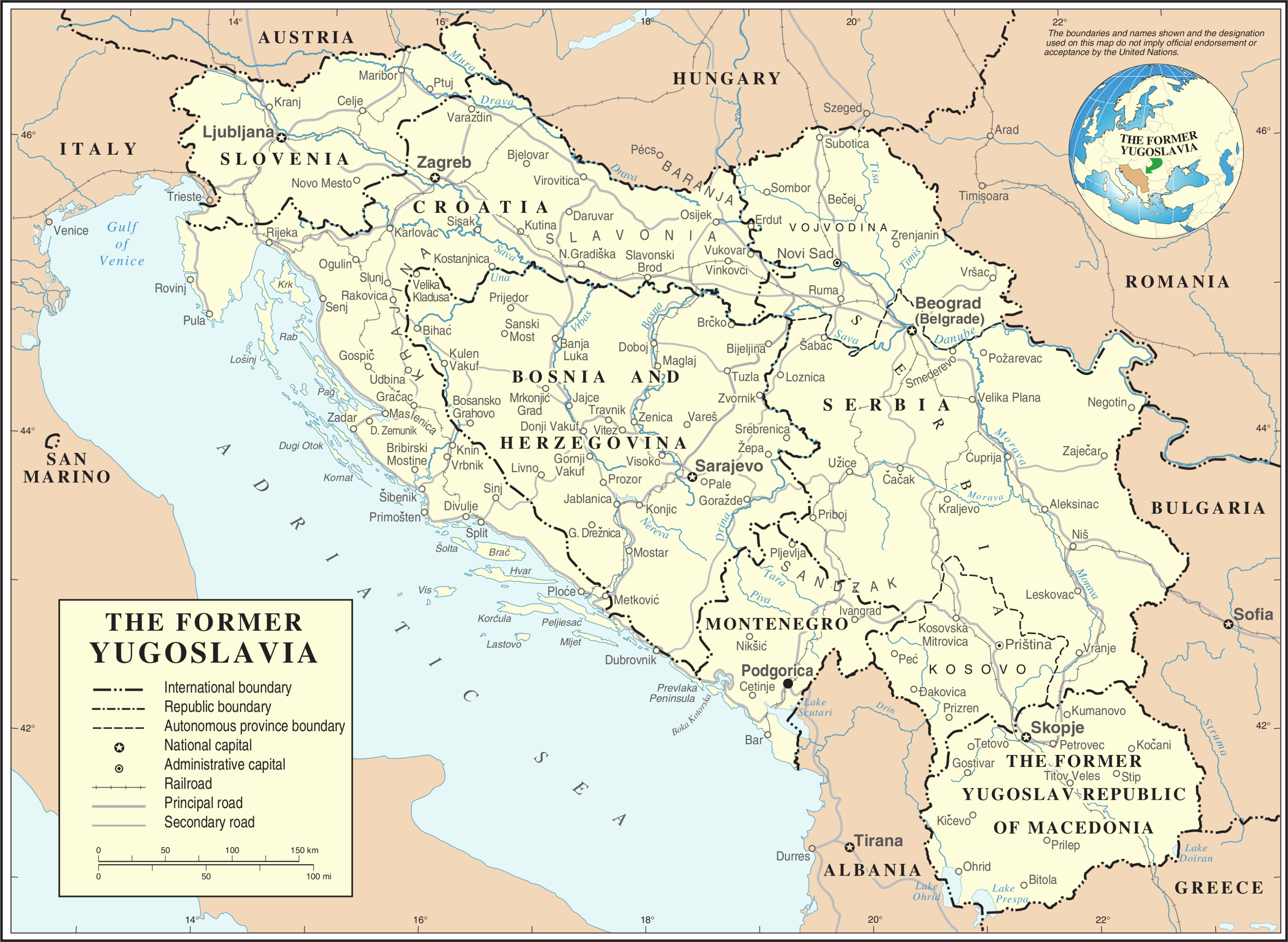
In all the constitutions of Yugoslavia, the Yugoslav People's Army was defined as the only legitimate armed force in the territory of the SFRY, and therefore, the only internationally recognized military entity. At the end of 1989, the SFRY Assembly passed amendments to the Constitution, thus replacing the one-party system with the multiparty system, which meant that besides the Alliance of Communists of Yugoslavia, other parties could now be formed.
At the end of January 1990, the Alliance of Communists of Yugoslavia collapsed, at the 14th SKY Congress in Belgrade, when sharp verbal clashes between Slovenian and Serbian delegates occurred regarding the future of the joint state of the SFRY.
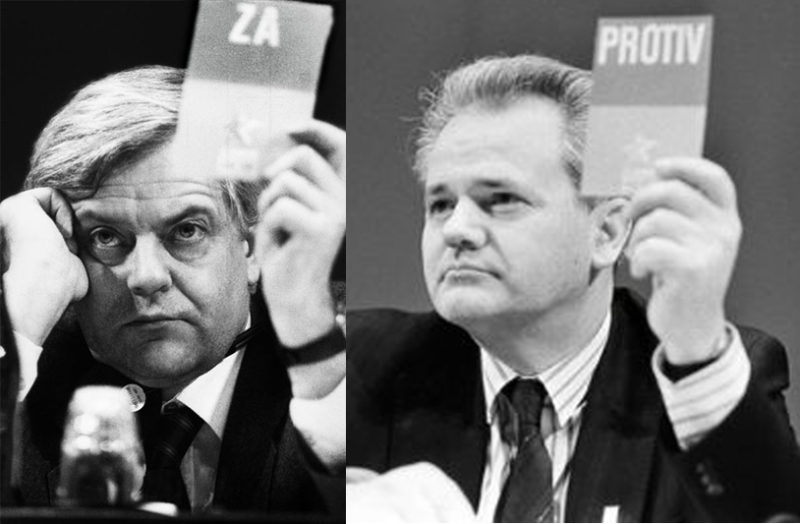
Opposing sides - Kučan and Milosević
The Slovenian delegation left the session, immediately followed by the delegation of the FR Croatia, which brought the issue of the congress into question. After them, the delegations of the FR of Bosnia and Herzegovina and the FR of Macedonia also left the congress.
Thus, after 45 years, the rule of the communists in SFRY ended.
The situation in Bosnia and Herzegovina
Bosnia and Herzegovina has been a central republic within the Socialistic Federal Republic of Yugoslavia, where Muslims, Serbs, Croats, and national minorities lived. On 18 November 1990, a multiparty election took place, the first after World War 2. The government was formed by the anti-communist parties- SDA, SDS, and HDZ. MP that won the highest number of votes (47,4%) was Muslim Fikret Abdić, a businessman from Velika Kladuša.
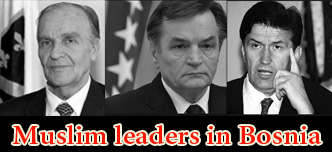
Alija Izetbegović, Ejup Ganić, and Haris Silajdžić
However, he was under pressure by Muslim extremists to step aside since he was against the war and conflicts with Serbs. As it turned out, he only served as bait for Muslim voters.
Alija Izetbegović, a pre-war criminal and author of the notorious chauvinistic “Islamic Declaration” became president of the presidency of B&H. Momčilo Krajišnik, a member of the Serbian party (SDS) became president of the Parliament, while a Croat Jure Prelivan was appointed to the prime minister of the Federal Republic of Bosnia and Herzegovina. The coalition ruled for 15 months. It collapsed at the beginning of the conflicts in Bosnia in April 1992.
Leaders of Muslim Party of Democratic Action- Alija Izetbegović, Ejup Ganić, Haris Silajdžić, and others, advocated the independence of Bosnia and Herzegovina from Yugoslavia as early as 1991. Muslim SDA and Croatian HDZ shared a goal of an ethnically and religiously cleansed state. However, Bosnian Croats wanted integration with Croatia, while Muslims wanted to create an Islamic state.

Izetbegović participated in WW II in notorious Bosnian Muslim 13th Waffen
Mountain Division of the SS Handschar (1st Croatian) member,
known for the WW II genocide of Serbs
The Bosnian independence propaganda was spread by the media and press. As early as October 1991, the press in Sarajevo published open threats directed towards Serbian people. Among everything else, it was announced that the notorious Hadschar Division, Ustasha unit that committed horrible crimes against Serbs in the Independent State of Croatia (NDH) during 1941-1944, would be re-established. This unit had been mostly filled with Muslims. Ustasha crimes in NDH reached their peak in Bosnia itself with Prebilovci, Drakulić, Bileća, Gacko, Donja Gradina, Kupres as the most suffering places.
August 1995 witnessed organized arming of paramilitary forces of Muslims and Croats in Bosnia and Herzegovina through channels of the parties SDA and HDZ, intending to attack the Yugoslav People's Army (JNA). In October 1991, local committees of paramilitary units "Green Berets" and "Patriotic League" were established. In the second half of 1991, Mostar was full of members of the JNA, who came from Croatia (Dalmatia and Dubrovnik area), from where they were expelled or withdrawn. They further withdrew in Užice (Serbia) at the end of March 1992.
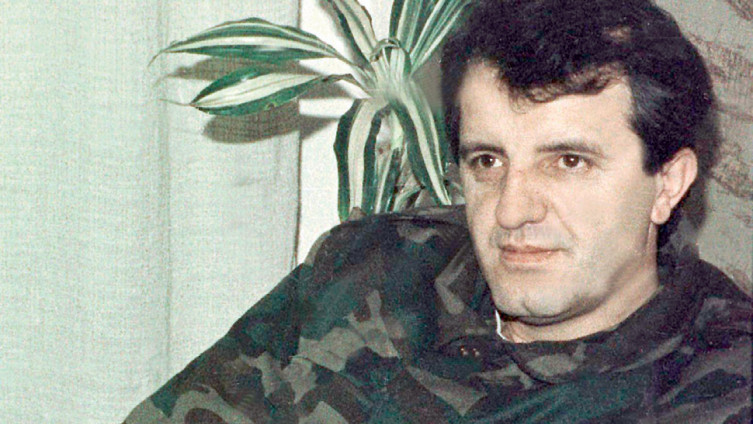
Sefer Halilović - founder of Bosnian Muslim paramilitary forces
On March 1, 1992 a referendum on the separation of Bosnia and Herzegovina from Yugoslavia was organized with 62.4% of voters having voted for independence. A day later in Sarajevo, members of the "Green Berets", led by a criminal Ramiz Delalić aka Ćelo started shoting at a Serbian wedding party at Baščaršija having killed the groom's father Nikola Gardović and wounded priest Radenko Miković.
This was an event that announced the bloody war in Bosnia-Herzegovina in the 1990s, but this also served as cause to dissolve still nationally-mixed police in Sarajevo. After that, numerous attacks on Serbian positions in Bosnia and Herzegovina and on members of the JNA occured (Sijekovac, Kupres, Sarajevo, Tuzla...). International representatives remained silent to these events.
The Situation in Brčko
Brcko is situated in Posavina region on the right coast of river Sava, or at the mouth of its right tributary Brka (after which the town was named) at 96 meters of altitude. Fertile region Semberia lies to the east and Posavina spreads to the west, while 15 km from the town slopes of mountain Majevica rise to the south.
South Slavs settled this region in IV and V century, and later they created their own states. In the age of Nemanjić dynasty, the region of Brčko was part of Serbia at the time when its power was at its peak. During XIV century, Balkan was being occupied by Osmanli Turks who advanced on their way to Vienna bringing Islam as a ruling religion. After their defeat near Vienna, the Ottoman Empire retreated, and after the Congress in Berlin in 1878, Brćko became part of the Habsburg Monarchy.
With the end of the First World War in 1918, when Serbia was liberating its fatherland, this region became part of the first Yugoslavs’ state- Kingdom of SHS, specifically, part of the Drina banate. During World War II, the Brčko region, together with entire Bosnia and Herzegovina came under the authority of the Ustasha’s Independent State of Croatia. Ustashas committed horrible crimes and conducted genocidal actions against Serbs, Jews and Romas.
After the end of the War in 1945, Brčko became part of SR Bosnia and Herzegovina and the entire region witnessed industrial revolution. In 1946, young people from all parts of Yugoslavia built railway Brčko-Banovići with joint efforts.
According to 1991 census, the region of Brčko had population of 87,627 people among which Muslims held 47%, Serbs 27%, Croats 25% and others 4%.

Brčanska Grbavica is the place with the largest number of victims in previous war in Southeast part of Bosnia. More than 65 warriors gave their lives for making foundations of the Srpska Republic’s statehood in Bosnia and Herzegovina.
THE CRIME
Immediately after this terrible crime at the beginning of March, 1993, the Army of Republic of Srpska conducted actions in the Brčko countryside on the Vranovaca hill which could have helped in liberation of this part of Posavina.
On the hill, Croatian and Muslim forces received back up, and after that, they surrounded Serbian soldiers capturing 15 soldiers of VRS (the Army of Srpska Republic) and taking them to the village Boderište where Croats lived as majority population.
These soldiers of the Srpska Republic were subjected to dreadful torture with slaughterers having beaten them with blunt tools, and then cut parts of their bodies, and to some of them even their heads.
LIST OF VICTIMS
-
Miroslav N. Pudić from Brčanska Grbavica, born on 1959
-
Stojan Dj. Pudić from Brčanska Grbavica, born on 1952
-
Radan K. Pudić from Brčanska Grbavica, born on 1974
-
Petar L. Tadić from Brčanska Grbavica, born on 1942
-
Mirko C. Pekić from Brčanska Grbavica, born on 1932
-
Gojko J. Vujičić from Brčanska Grbavica, born on 1958
-
Ilija M. Bajić from Brčanska Grbavica, born on 1956
-
Perica R. Jovičić from Brčanska Grbavica, born on 1972
-
Ranko P. Jovičić from Brčanska Grbavica, born on 1945
-
Dragan R. Tomić from Brčanska Grbavica, born on 1974
-
Nikola S. Tomić from Brčanska Grbavica, born on 1949
-
Stojan R. Tomić from Brčanska Grbavica, born on 1972
-
Željko Padežanin from Brčanska Grbavica, born on 1973
-
Radovan M. Marjanović from Brčanska Grbavica, born on 1972
-
Siniša J. Pudić from Brčanska Grbavica, born on 1974
AFTERMATH
They day later on March 9, 1993 the Army of Srpska Republic tried to make exchange, but Croatian beasts only sent corpses of soldiers in a van. The bodies were so massacred that even their families could hardly recognize them. Blood was leaping from the van.
The team of forensics specialists from the Military Medical Academy was engaged with dr Zoran Stanković, a pathologist, as a team leader. They conducted obduction in the evening of March 9, 1993. In that way, corpses of RSK soldiers were recognized.
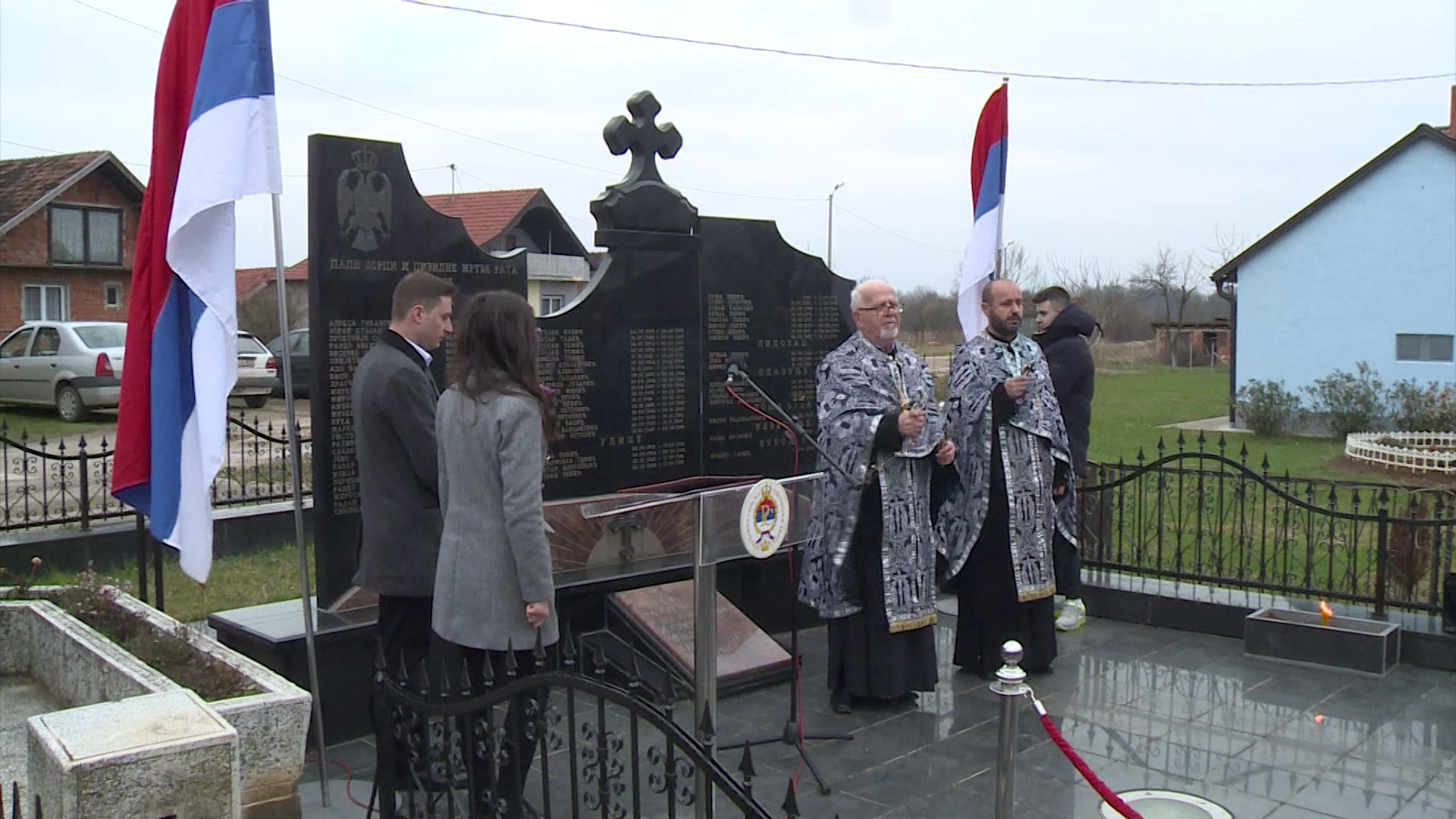
Corpses of 15 Serbian soldiers were buried at the local cemetery in Grbavica, near Brčko.
TRIAL
In 2005, the Hague Tribunal refused to deal with this case although abundant documentation was submitted. It transferred the case to the Prosecutor’s Office of Bosnia and Herzegovina which deliberately made obstructions of the trial.
Only on May 12, 2015 three members of the Croatian Defence Council were arrested as being suspected of participating in the massacre. Those are: Admir Rizvanović, Smail Omerović and Jasmin Huskanović.
Tags:
Please, vote for this article:
Visited: 3523 point
Number of votes: 11
|